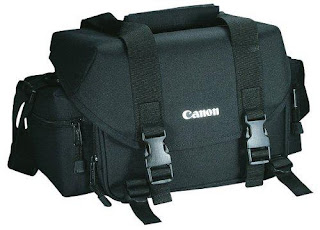production X-Pro1
With the X100's success and the increasing popularity of mirrorless interchangeable lens cameras, it seemed only a matter of time before Fujifilm would introduce a higher-end model with exchangeable lenses. Fujifilm X-Pro1 highlights
The X-Pro1 is the start of an all-new camera system, with a brand new mount and lenses. Fujifilm-designed 16MP APS-C X-Trans CMOS sensor
Novel colour filter array to suppress colour moiré, no optical low-pass filter
EXR Processor Pro image processor.
Dual-magnification hybrid optical / electronic viewfinder
Analogue dials for shutter speed and exposure compensation on top of camera
All-new, fully electronic X lens mount; 17.7mm flange-to-sensor distance
Three 'XF' lenses at launch: XF 18mm F2 R, XF 35mm F1.4 R, and XF 60mm F2.4 R Macro.
Prime lenses have traditional-style aperture rings (1/3 stop increments) and large manual focus rings
Revised rear-panel control layout
On-screen 'Q' control panel and redesigned tabbed menu system
Focal-plane shutter, 1/4000 sec max speed
The X-Pro 1 uses an entirely new all-electronic lens mount, and the initial lens line-up will consist of a set of bright primes with focal lengths that neatly complement the X100's 23mm F2. There's an 18mm F2 wideangle, 35mm F1.4 normal, and 60mm F2.4 Macro telephoto (offering 28mm, 50mm and 90mm equivalents respectively)
the latter with extended close-focus capabilities giving 0.5x magnification. The X100's signature optical/electronic 'hybrid' viewfinder is retained, and to help cope with interchangeable lenses it now offers two magnifications. The 60mm lens uses a smaller frameline within this magnified view. Yep, the X-Pro 1. 1. Fuji launches the X100, a fixed focal lens camera with a hybrid viewfinder and a retro design. Most of the customers complained about the shutter lag and 35mm fixed focal lens.
2. Fuji launches the X10 (retro design), a smaller compact camera with a fast zoom lens and a built in zoom optical viewfinder.
provided a first look at Fujifilm’s new mirrorless compact system camera, the Fujifilm X-Pro1. In doing so, Fuji was able to completely remove the low-pass optical filter from the X-Pro1’s system.
Fuji has also added some “secret sauce” via the new EXR Processor Pro and the X-Pro1 seemingly out-resolves much larger sensors at a range of ISOs. In the meantime, you can check out Fuji’s sample images shot with the Fuji X-Pro1 here. For instance, the lens focus was noisy and the aperture ring rotated roughly. Dedicated accessory flash units common to the other X-series cameras work and a new EF-X20 flash was designed just for this camera. To that end, the Fujinon lens design team has created the XF Lens system and X-Mount for the X-Pro1, determining that an extremely short lens flange to sensor distance would be critical to the design. Subsequently, Fuji was able to adjust lens designs for optimum coverage of the sensor.
The initial launch of the Fujifilm X-Pro1 will include three fast but compact lenses: 18mm f/2, 35mm f/1.4 and a 60mm f/2.4 Macro (think 28/50/90mm full frame 35mm equivalents give or take a millimeter or three).
Here is a breakdown of future lenses in the X-Pro1 system:
2012
• 14mm (21mm equivalent) super wide
• 18-72mm f/4 (27-108mm equivalent) image stabilized zoom
2013
• 23mm f/2 (34mm equivalent) wide
• 28mm f/2.8 pancake design (42mm equivalent) normal
• 12-24mm f/4 (18-36mm equivalent) image stabilized zoom
• 70-200mm f/4 (105-300mm equivalent) image stabilized zoom
NOTE: It’s possible some of the specs may change by the time these lenses are released and it’s not clear if the zooms will use the OVF in addition to the more practical EVF.















































